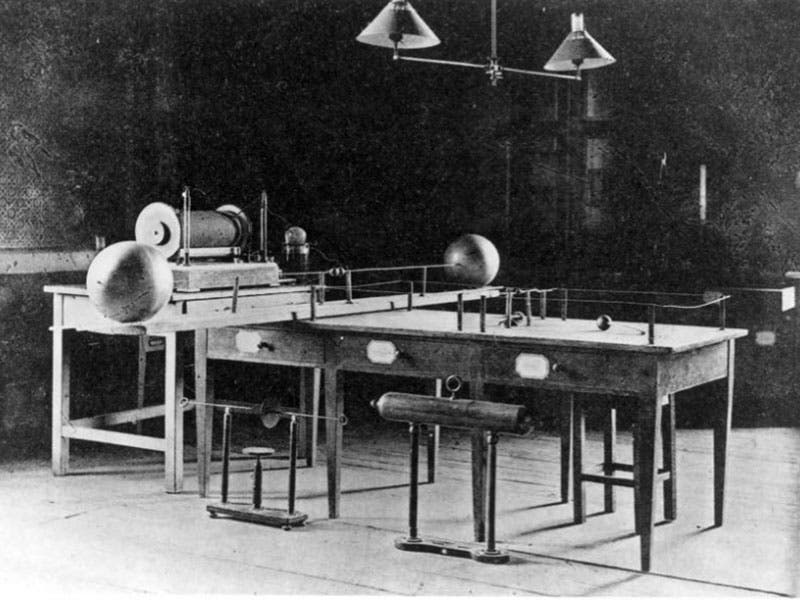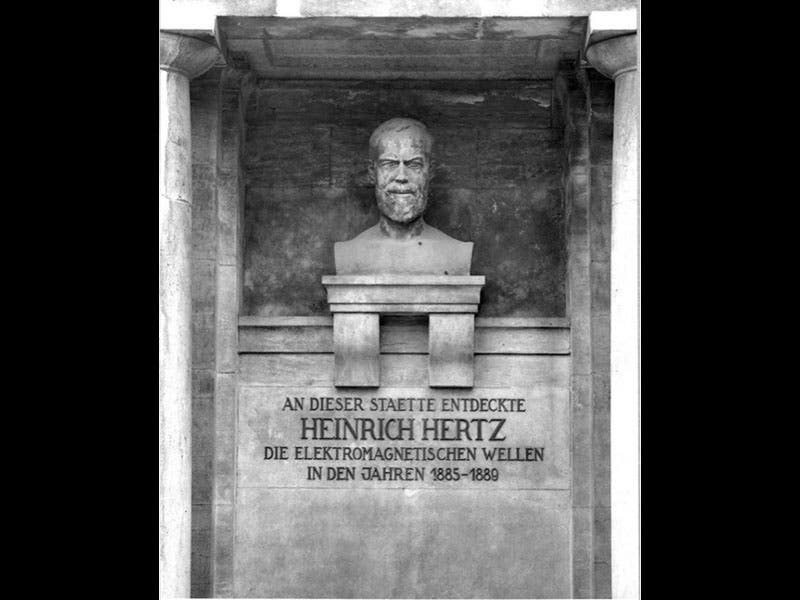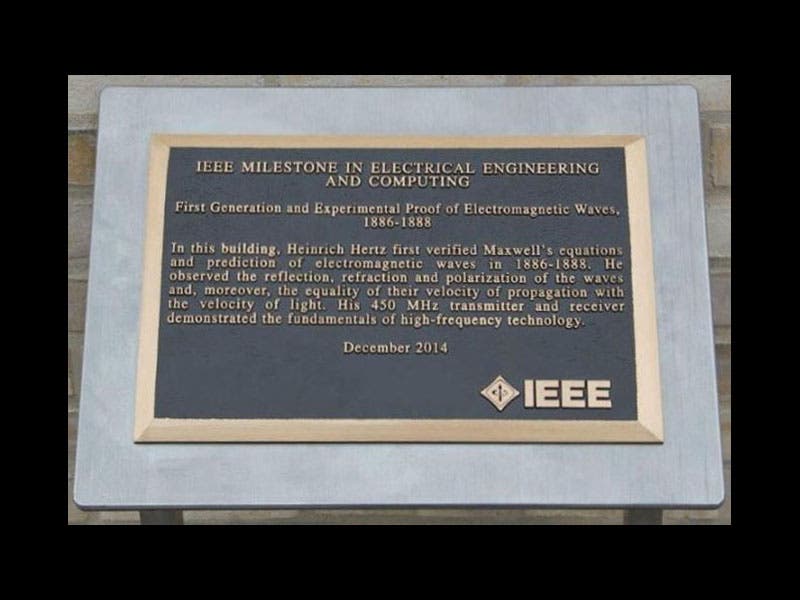Scientist of the Day - Heinrich Hertz
Heinrich Hertz, a German physicist, was born Feb. 22, 1857. In 1865, James Clerk Maxwell had predicted the existence of electromagnetic radiation, and he had further proposed that light itself is a kind of electromagnetic (EM) wave. But no one knew if this were true, and whether non-visible radiation might exist as well. Hertz, beginning in 1886, did a series of experiments in which he used an oscillator that produced a high-voltage spark. By Maxwell's theory, this should produce an E/M wave of a certain wavelength, so the oscillator was in effect an EM wave transmitter. Hertz then constructed a receiver that was basically a circle of copper wire with a tiny gap between the ends. If an EM wave were produced by the transmitter, it should produce tiny sparks in the receiver as it passed through, and sure enough, it did. Maxwell’s waves were real. Hertz went on to measure the speed of EM radiation and showed it was the same as the speed of light, also as predicted by Maxwell. Seven years later, Marconi would begin his own experiments to produce EM waves in the form of radio waves. Hertz, however, did not see the fruits of his discovery. He came down with a rare autoimmune disease that destroyed his teeth and jaws, and the unfortunate man died in 1894, at the age of just 36. The modern unit of frequency, the Hertz (as in Megahertz) is named in his honor.
The images show a bust erected in Hertz’s honor at the Karlsruhe Institute of Technology (third image); a commemorative plaque at the same location, awarded by the IEEE (fourth image); a photographic portrait of Hertz (second image); and another photograph, supposedly taken by Hertz himself, that shows some of his laboratory equipment, including the EM transmitter, the long object with two large spheres on the ends and two smaller spheres in the center, between which the sparks were generated (first image). The spark coil behind provided the high-voltage. The receiving loop is not in evidence.
Dr. William B. Ashworth, Jr., Consultant for the History of Science, Linda Hall Library and Associate Professor, Department of History, University of Missouri-Kansas City. Comments or corrections are welcome; please direct to ashworthw@umkc.edu.










![Using an astrolabe to measure the depth of a well, woodcut in Elucidatio fabricae vsusq[ue] astrolabii, by Johannes Stöffler, 1513 (Linda Hall Library)](https://assets-us-01.kc-usercontent.com:443/9dd25524-761a-000d-d79f-86a5086d4774/a998eb50-55d2-4a88-ace2-a50aa5fa86e7/Stoffler%201.jpg?w=210&h=210&auto=format&fit=crop)